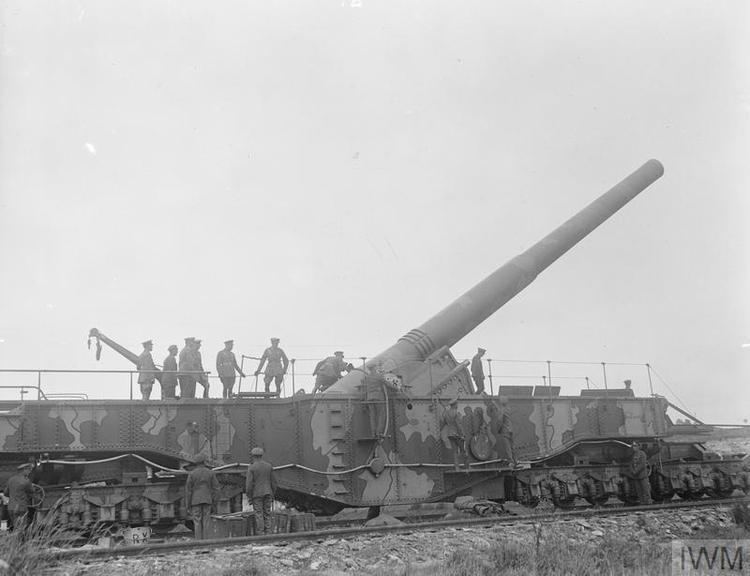Type Railway gun In service 1918–1926 Wars World War I | Place of origin United Kingdom Used by United Kingdom | |
 | ||
Designer Elswick Ordnance Company | ||
Ordnance BL 14 inch gun on truck, railway were 2 British 14 inch Mk III naval guns mounted on railway carriages, used on the Western Front in 1918. The guns had a very brief service life and were scrapped in 1926, but their railway carriages were re-used for mounting guns in World War II.
Contents
Design and development
The guns were built by Armstrongs (Elswick Ordnance Company) and were originally intended to be mounted as a pair in a twin turret on the Japanese battleship Yamashiro but the order was not completed. Hence the breech of the left gun, which became known as "Scene Shifter", opened to the left which was unusual for a British army gun, while that of the right gun, "Boche Buster", opened to the right. Work on mounting them on railway carriages began in 1916 but was not completed until 1918.
The gun was fired from curved sections of track off the main line which allowed it to be pointed in the required direction, and the gun mount could traverse 2° left and right for finer adjustments. To adjust more than 2° the entire gun car was moved forward or backward along its track.
The railway mounting was of the "cradle and rolling recoil" type : the gun was mounted high up in a standard cradle with hydropneumatic buffers which allowed the gun to recoil 34 inches on firing at maximum elevation without striking the ground, and the remaining recoil force was expended by allowing the entire railway car to roll backwards 20–30 feet until stopped by its brakes. The gun car had a winch at the front attached by cable to a strongpoint further ahead, and the winch dragged the gun car back to its firing position. The advantage of this system was that no special track preparation was required and the gun could fire from any position along its curved section of track.
Combat service
The guns arrived with their carriages in France on 26 May 1918, but incomplete, and were not in action until 8 August. The two guns were operated by 471 Siege Battery from May 1918, and were known as "HM Gun Boche Buster", operating near Arras with First Army, and "HM Gun Scene Shifter", operating near Bethune with Fifth Army. They were used for long-range interdiction fire on key German targets such as railway junctions. King George V personally oversaw the firing of the first shell by Boche Buster from near Marœuil, 6 km NW of Arras, on 8 August in a fireplan to hit German reinforcements being sent south to oppose the British Amiens offensive. This shell heavily damaged a railway junction at Douai and became known as "The King's Shot". A total of approximately 235 rounds were fired by the guns during their four months on the Western Front.
14 inch was not a standard British service calibre and hence it was impractical to keep the guns in service after World War I ended. The guns were declared obsolete in 1926 and scrapped. In 1940 the railway carriages were re-used : Scene Shifter's for mounting a 13.5 inch gun and Boche Buster's for an 18-inch (460 mm) howitzer, for home defence in Britain.
